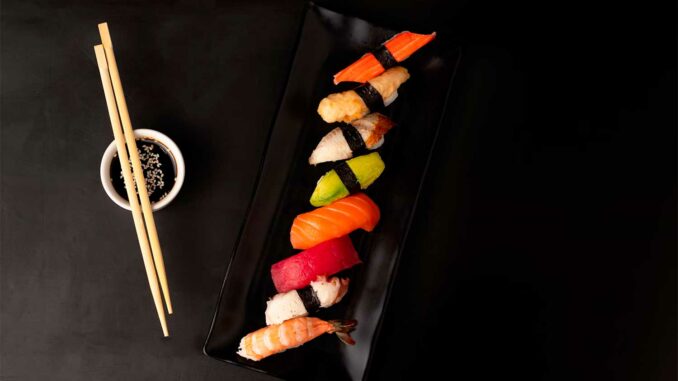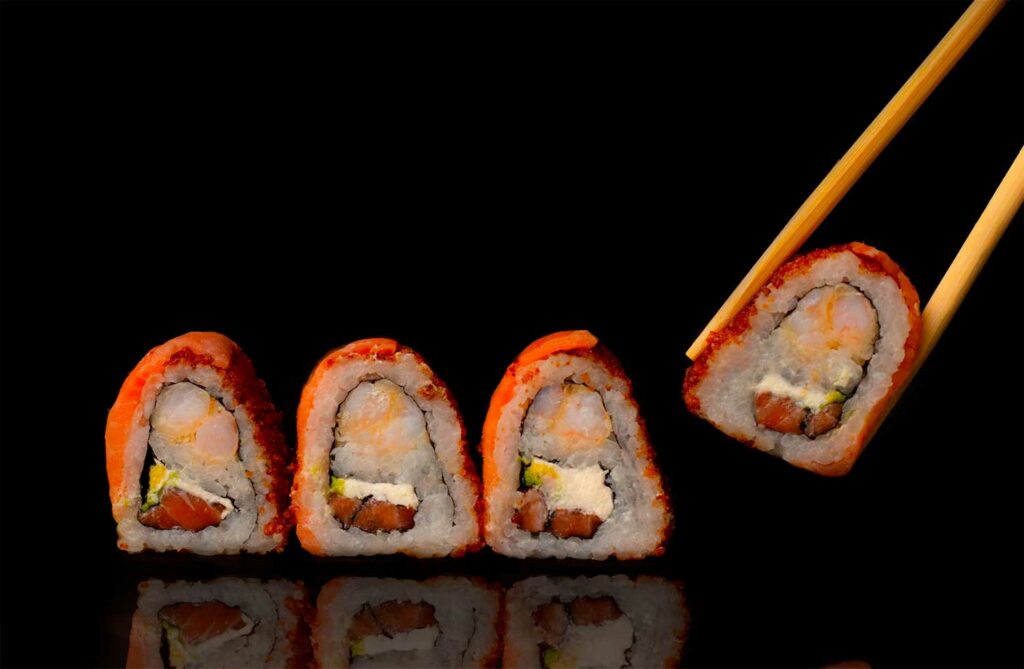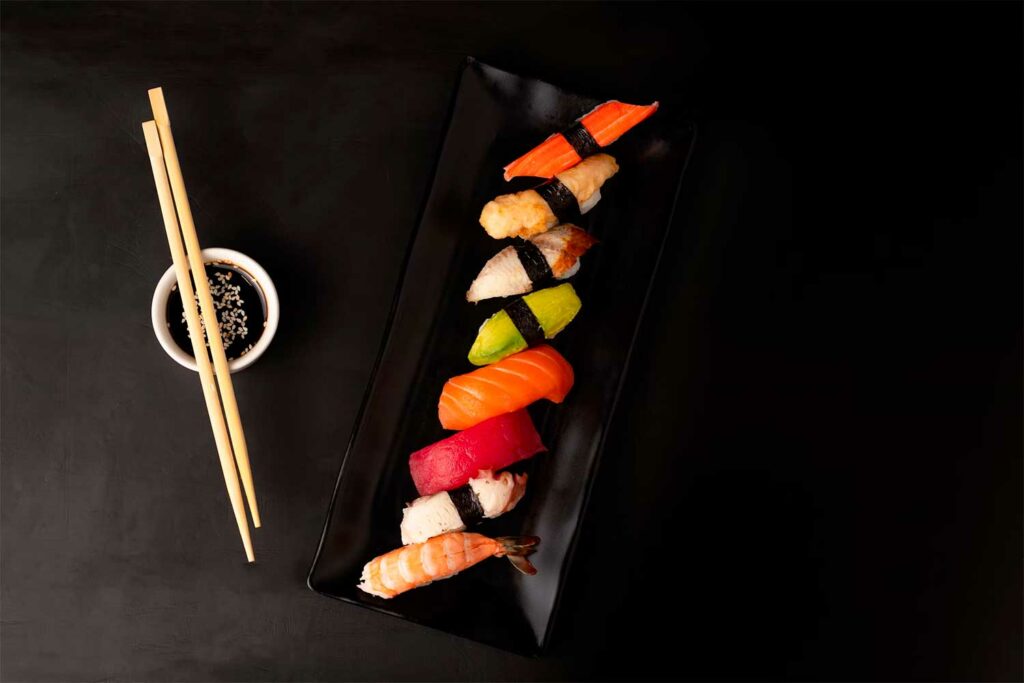
A specialist guide to sushi history, rice, fish and tools—explained through French cooking culture, technique, and sourcing. Practical tips, safety, and craft.
Sushi is often seen as minimalist, yet it is one of the world’s most exacting cuisines. This guide traces sushi’s evolution from early fermented fish to Edo-style nigiri, then shows how to master rice, knife work, fish selection, and seasoning at home. Read it as a sushi primer written with the precision of French gastronomy: ingredient quality, technique, and terroir matter. You’ll learn how sushi’s core methods align with French cooking, how to shop in France, and where cooking classes in France can turn knowledge into skill. The aim is a confident, elegant practice that respects Japanese tradition while speaking fluently to French food culture.
From fermentation to fast art: how sushi became modern
Sushi begins as preservation. Early narezushi packed fish in salted, fermented rice; the rice was once discarded and only later eaten as part of the dish. During the Edo period, technique pivoted from long fermentation to speed and freshness—hayazushi—setting the stage for today’s nigiri. Tokyo (then Edo) had the perfect conditions: a bay teeming with seafood, rice vinegar production, and a street-food appetite. Nigiri emerged as a chef’s riff on immediacy: vinegared rice in the palm, a precisely cut slice of seafood on top, a breath of wasabi, a brush of soy, served to be eaten at once. In that instant, sushi became a craft of timing and proportion rather than storage. For cooks trained in French cuisine, this arc feels familiar: like a jus reduced to its essence, nigiri is about balance—seasoning the rice to lift flavor, cutting the fish to cue texture, composing one bite with discipline. The discipline is the point, and it is why sushi rewards the same patience and attention prized in French gastronomy.
Rice is the dish: shari that holds, shines and tastes alive
Grain, wash, cook, season, cool
Sushi rice—shari—is short-grain japonica, chosen for its natural stickiness and gloss. Premium varieties such as Koshihikari are prized for a delicate sweetness and cohesive bite that still separates on the tongue. Washing is non-negotiable: multiple rinses until the water runs clear, a short soak, then precise cooking—typically equal parts rice and water by volume, adjusted for grain and pan. The next steps are technique: turn the hot rice into a wooden hangiri so the timber absorbs excess moisture, fan as you fold in seasoned vinegar (rice vinegar, sugar, salt), and stop when the grains are glossy, warm, and gently aerated. That aeration keeps the rice light, so a nigiri dissolves rather than compacts in the mouth. For readers grounded in French cooking, think risotto discipline without the stirring: temperature control, starch management, seasoning that brightens but never shouts. When done well, rice becomes the flavor conductor for the seafood—subtle, elastic, and fragrant. It is here, more than anywhere, that sushi’s craft speaks to French food culture and its quiet insistence on doing simple things properly.
The cut is the texture: knives, edges and motion
Tools of intent and how to use them
Sushi knife work is about clean, single strokes that respect muscle fiber. The trio at the heart of a set mirrors the task: deba for breaking down fish, usuba for vegetables, and yanagiba for sashimi and nigiri slicing. Edges are sharpened frequently; carbon steel takes a keen edge but demands care. Cuts vary by species: lean tuna wants longer, even slices to emphasize grain; fatty salmon needs a slightly different angle to keep the face of the cut smooth; octopus benefits from fine cross-hatching to tenderize. In plate terms, a perfect slice is to sushi what an even brunoise is to a sauce: invisible technique that transforms texture and mouthfeel. For home cooks in France, this is where training helps. Many cooking classes in France now teach Japanese knife basics alongside familiar French cuts, reinforcing the same motor skills and letting students feel how a true sashimi slice is a single, confident pull rather than a sawing motion.
Fish, shellfish and safety: sourcing for excellence
Freshness cues, maturation, and European rules
Sushi rewards impeccable sourcing. Eyes bright, gills clean, flesh firm, scent of the sea, not “fishy.” Beyond freshness, some species improve with short maturation under refrigeration, which firms texture and rounds flavor. In Europe, food-safety law requires freezing certain fish intended to be eaten raw to control parasites; fishmongers and restaurants compliant with EU rules can advise on species and treatment. In France, use your poissonnier for guidance—ask explicitly for fish suitable for raw preparation, and verify freezing where required. Remember that not all sushi must be raw: shrimp and octopus are often briefly cooked; mackerel takes beautifully to a light vinegar cure; eel is served cooked and glazed. Approached this way, sushi harmonizes with regional specialties and markets across France—Atlantic mackerel, line-caught bass, or trout from mountain regions—always filtered through food-safety best practice. That combination of rigor and terroir sits naturally within French gastronomy.


Nori, wasabi, ginger, soy: seasonings that stay in the background
How to choose and how to use
Nori should snap and shine—thin, dark sheets with a crisp break and a clean ocean aroma. Wasabi is ideally real wasabi (Wasabia japonica), grated to order for perfumed heat; in most contexts, a blend based on horseradish is used, offering dependable pungency. Ginger is there to reset the palate; soy is a finishing accent, not a soak. A few rules improve flavor immediately: don’t drown rice in soy—touch fish side only; never stir wasabi into the soy unless the chef suggests it; eat nigiri in a single, composed bite. Such etiquette is not decoration; it preserves balance so the seasoned rice and fish can do their work. These are the same instincts that guide French cuisine: season to reveal, not to mask; respect the architecture of the bite.
Forms and assembly: nigiri, maki and sashimi
Structure, proportion, temperature
Nigiri is architecture. Shape an oval of rice that is coherent but not compressed; place a slice of fish that drapes without excess overhang; add a whisper of wasabi between fish and rice if appropriate. For maki, lay rice thinly on nori, keep fillings modest, and roll with a bamboo mat to compact gently; cut with a clean, damp blade. Sashimi is pure knife work and plating: a sequence of textures and fat levels that rise and fall across the plate. Temperature matters: rice at body-warm, fish cool but not icy, nori crisp. The aim is contrast with unity, a principle any lover of French food culture recognizes from a well-constructed cheese course or a composed salad—different elements held together by proportion and restraint.
Cooking times and controlled treatments that elevate quality
Rice timing, seafood blanching, light cures
Rice timing determines shine and hold: roughly 18–20 minutes of gentle cooking after the bring-to-boil stage, then 10 minutes resting under cover, before seasoning in the hangiri. Seafood sometimes benefits from minimal cooking or curing. Shrimp are briefly poached and shocked so they remain sweet and snappy; octopus is simmered slowly, then sliced thin, often with tenderizing cuts; mackerel can be salted and vinegared to soften its boldness while keeping a vivid bite. These treatments diversify texture and flavor without abandoning the freshness ideal. They also open doors to local adaptations in France—pair vinegared mackerel with pickled shallots and citrus; serve lightly poached langoustines over seasoned rice; use mountain trout cured with salt and a hint of vinegar for pristine nigiri. This is sushi meeting French cooking where both prize precision.
Tools that make a difference at home
What to buy first, how to care for it
Start with a rice cooker or a heavy-lidded pot that holds steam evenly; add a hangiri to season and cool rice with control; keep a bamboo mat for maki; invest in a reliable yanagiba and a small fish-bone tweezer. Care is part of the craft: wash and dry bamboo thoroughly; never dishwash your knives; hone often and sharpen properly. These habits are the kitchen equivalent of maintaining copper pans or carbon-steel skillets in French cuisine—they protect performance and make consistent results possible.
Learning in France: classes, markets and a shared language of craft
Where French gastronomy and sushi technique meet
France is an ideal place to study sushi because the cultural values align: market-driven sourcing, technique before trend, flavor through restraint. In Paris, Lyon, Bordeaux and Marseille, cooking classes in France now teach sushi fundamentals alongside fish butchery, knife maintenance and rice preparation. The best courses mirror Japanese apprenticeships in miniature: repetition, tasting, correction. Outside the classroom, French markets provide the raw materials—Atlantic mackerel and sardines rich in omega-3, spring onions for bright, gentle allium notes, vinegars and salts of character, and seasonal vegetables for maki fillings that respect the calendar. Practice this way and sushi becomes a dialogue between Japan’s culinary grammar and French gastronomy’s diction: clean product, firm technique, and the confidence to do less, better.
An editorial note on balance and culture
Sushi is not a decorative diet food; it is a disciplined cuisine. Its apparent simplicity hides exact choices about grain, cut, temperature, seasoning and timing. Approached with the same seriousness that France applies to sauces or bread, it becomes a natural fit for French food culture—a place where regional specialties and Japanese method can coexist with integrity. That is the promise of craft: fewer ingredients, deeper attention, clearer flavor. It’s also why learning sushi enriches the cook who already loves French cooking and French cuisine—the principles are shared, and the pleasure is universal.
Cook in France is your independant source for food in France.